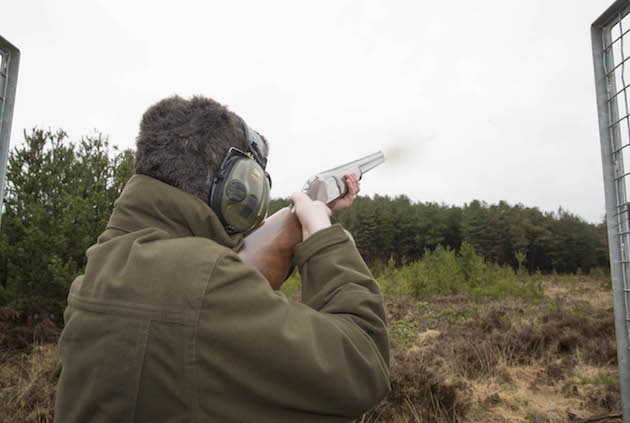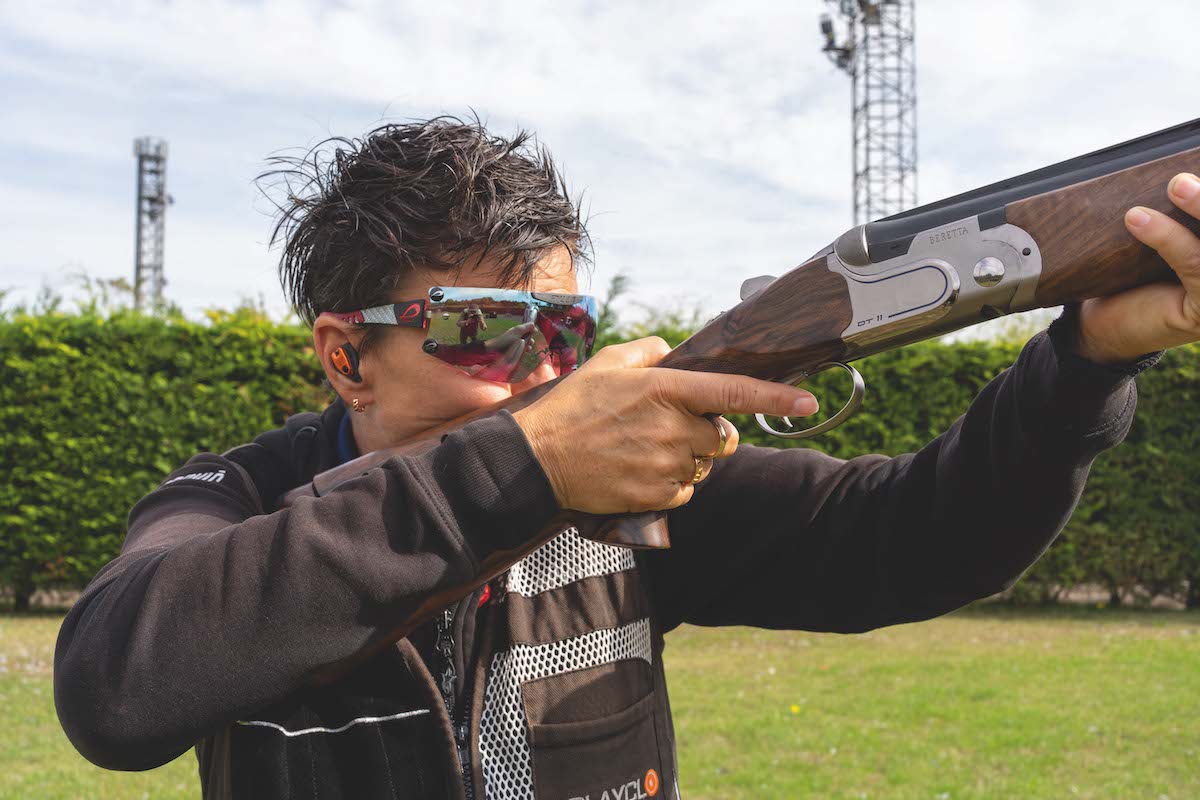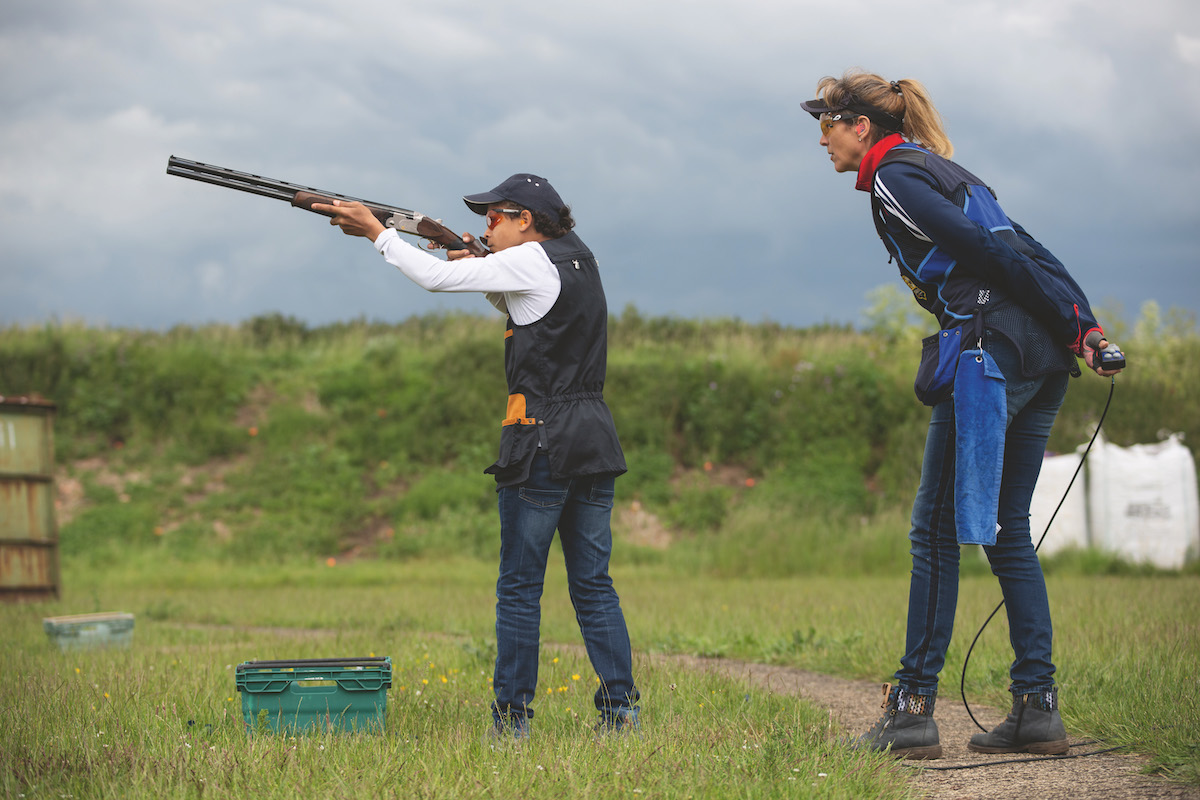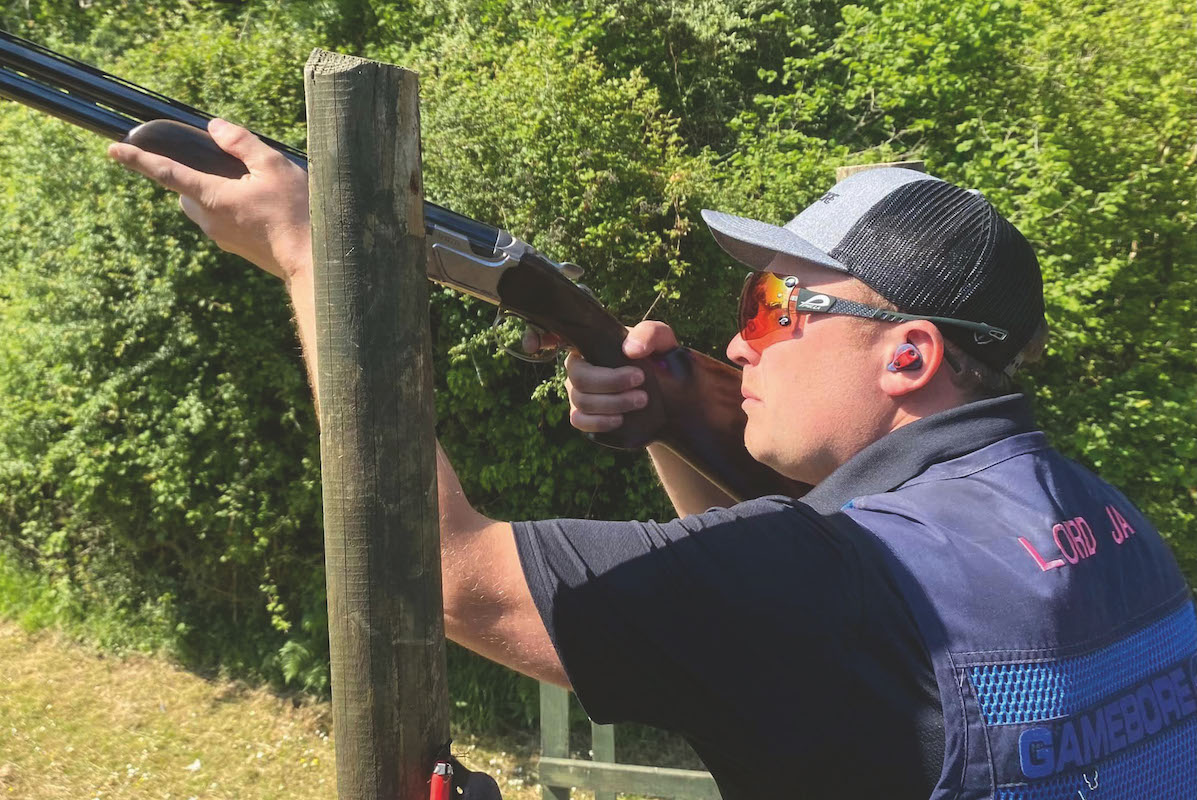Top techniques for different clays
Graham Brown shows his student Giacomo the four main techniques that can be employed when facing different clays

Interception technique
The first method that Graham looked at was the interception technique, which is a simple method. Graham took Giacomo to a simple slow teal target. Graham says, “Interception here is working on one plane, taking the gun to the point of the shot and with very little or no movement thereafter. As with all clays you have to observe where it is coming from and where it is going and then decide where you will first see it and where you will shoot it. In the case of a pair of clays, the second target will dictate where you shoot the first. It may be best to shoot the first clay in a position that will require as little movement as possible to get on to the second clay.

Interception technique
“In this case I would advise that with his gun down, Giacomo places the barrels slightly to the right of the line of the rising clay so he can see it and bring his gun up and into the clay – firing almost as soon as the gun is in his shoulder. It is a very instant, instinctive shot that is far quicker than using other techniques.”

Swing-through
Swing-through and pull-away techniques
Swing-through is perhaps a traditional technique that proves popular with many shooters – whether clay or game. Graham says, “This is very much the way Giacomo has been taught from an early age so it easy for him to relate to and for him to use it. The clay I am going to look at is a right-to-left looper and with Giacomo in the gun-down position. Again, watch where the clay is coming from, what it is doing and any landmarks along its path which can be useful for deciding where your pick up point and hold point will be. Essentially, swing-through involves coming from behind the clay, getting onto its trajectory and pushing through and ahead of it. It allows speed and momentum to build up and is perhaps a good method for faster targets. You have to pick the clay up quite early as you need to accelerate through it. If you delay you can end up trying to play catch up with it over a greater distance.
“The alternative is the pull-away technique. Rather than coming from behind and passing the target, you are mounting the gun onto the clay. As the gun is mounted you then pull-away from it to create your lead. Both methods work for this clay but the swing-through technique is better suited for crossing clays that have a flatter trajectory. As this clay is curling, there is a danger of shooting above it once it starts to curl downwards. Giacomo is able to use both methods well for this clay.”

Pull-away
Maintained lead
For Giacomo to try this technique Graham picked a medium height crosser travelling from left to right. Graham says, “To use this means of smashing a clay, you start to mount the gun and move it as the clay is approaching your chosen hold point. It works well on moderate-speed targets. You start in front of it and move with the clay, seeing a gap between the clay and your muzzles ahead of it. Imagine you are towing the clay behind the muzzles. See the space ahead of it and fly with it matching the speed and maintaining what you feel is the necessary gap or lead. Learning how much of a gap is required only comes naturally and will improve with practice – as do all techniques if they are to be employed successfully.

Maintained lead
Lessons from the instruction day
Graham then took Giacomo out to try on a variety of longer clays using different techniques. Giacomo found on one clay, a high crosser, that the pull-away method worked better than the swing-through technique. Graham says, “When a bird is slowing the pull-away method can be better as the swing-through can create too much acceleration on a decelerating target”. On a fast, quartering away target going from right to left, the swing-through proved the best option. On a high crosser Giacomo preferred maintained lead. Pull-away and maintained lead can be very similar.
Graham explains, “After trying out the techniques on closer targets, I decided to give Giacomo some harder ones – with mixed results. He has shot well, maintaining correct posture and shooting calmly without showing frustration, which are both excellent qualities. By pushing him onto harder targets it gives me, as an instructor, a good idea what level Giacomo, or in fact any student, are at. It’s no good immediately putting a student onto hard targets as frustration can build if they cannot hit them. See what they are doing, if need be bring them back on easier clays, and then start building up again. It is crucial that they have confidence and trust in the technique they are using. As soon as doubt enters your mind you are finished.”
How to shoot clay pigeons: Key clay pigeon shooting tips
Understand the jargon heard on the clay shooting ground with Mark Russell’s tips for shooting beginners
Secrets of successful clayshooting
Learn how to hit more targets by understanding the physics of clay pigeon shooting
How to read the clay target
Even with the best technique in the world, to succeed at a high level you must be able to size…
Giacomo is a calm character and talking about his lesson with Graham says, “I really enjoyed this next stage of my tuition. I didn’t find the techniques confusing, it was just a case of knowing which one to use. It’s about assessing the target and using the right method. After a while I want it to become instinctive and second nature. I enjoyed all the techniques, though I am more used to swing-through so that felt more natural to me. I liked the interception technique which is like snap-shooting – it is much more aggressive and worked well for me on the teal”.











